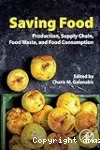1. Introduction in global food losses and food waste - Gang Liu and Li Xue
1. Introduction in global food losses and food waste - Gang Liu and Li Xue
+
-





